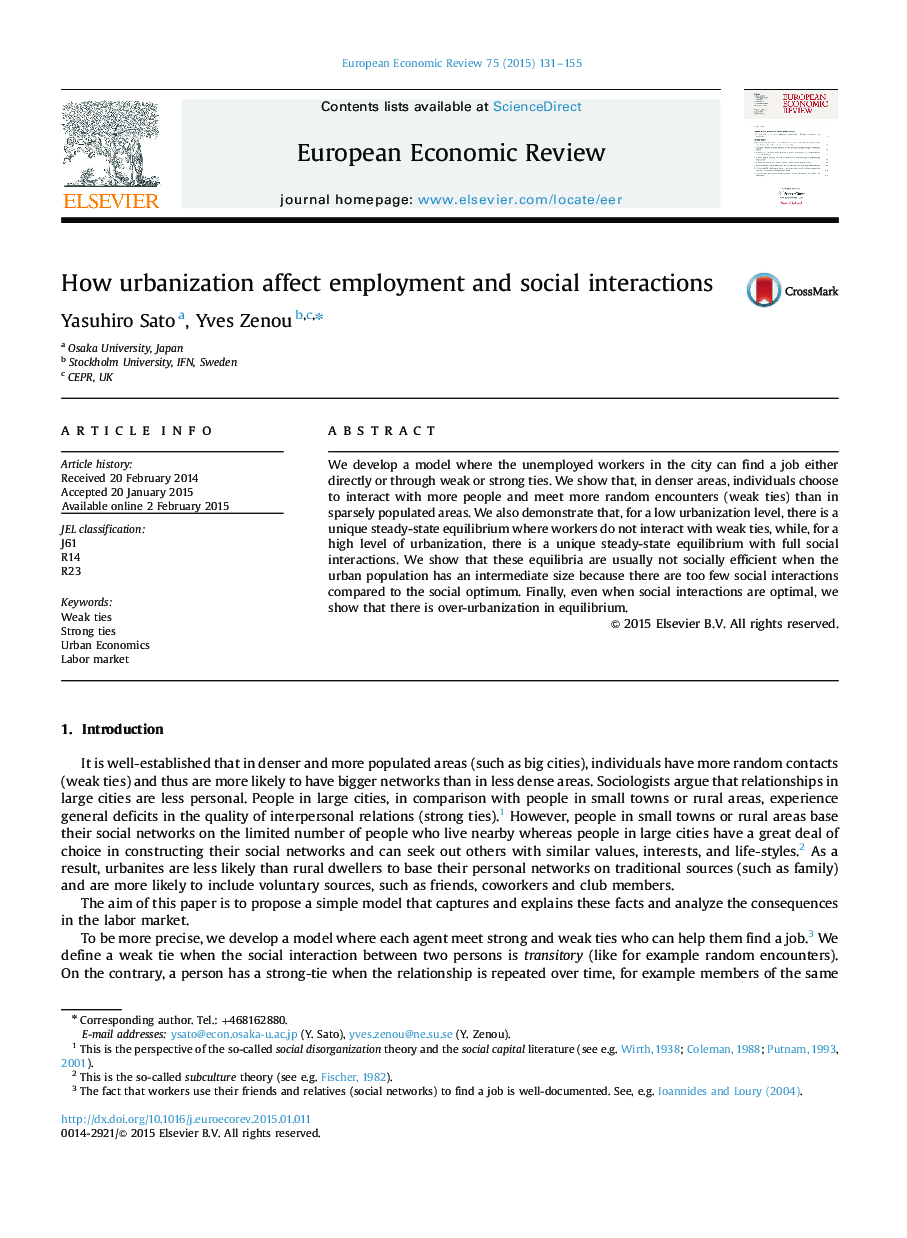| Article ID | Journal | Published Year | Pages | File Type |
|---|---|---|---|---|
| 5066741 | European Economic Review | 2015 | 25 Pages |
We develop a model where the unemployed workers in the city can find a job either directly or through weak or strong ties. We show that, in denser areas, individuals choose to interact with more people and meet more random encounters (weak ties) than in sparsely populated areas. We also demonstrate that, for a low urbanization level, there is a unique steady-state equilibrium where workers do not interact with weak ties, while, for a high level of urbanization, there is a unique steady-state equilibrium with full social interactions. We show that these equilibria are usually not socially efficient when the urban population has an intermediate size because there are too few social interactions compared to the social optimum. Finally, even when social interactions are optimal, we show that there is over-urbanization in equilibrium.
